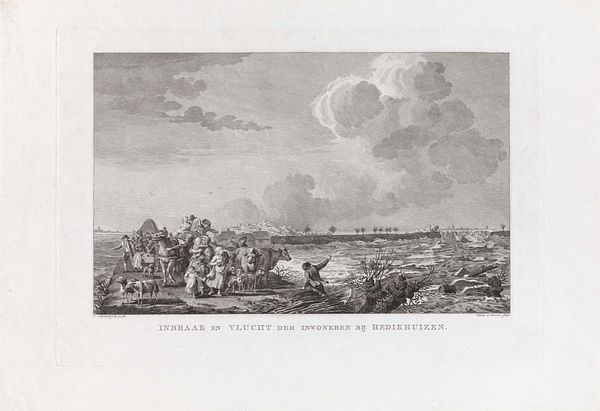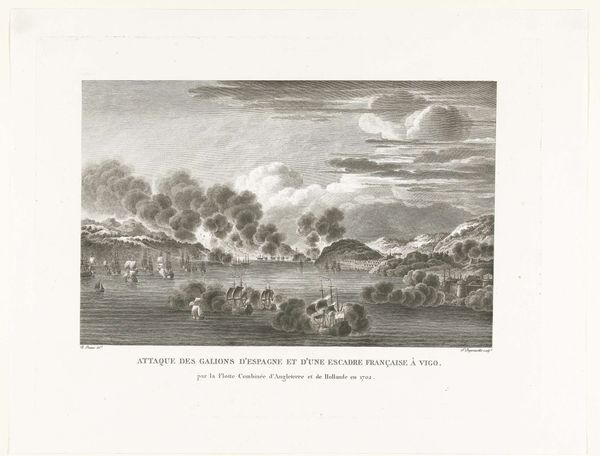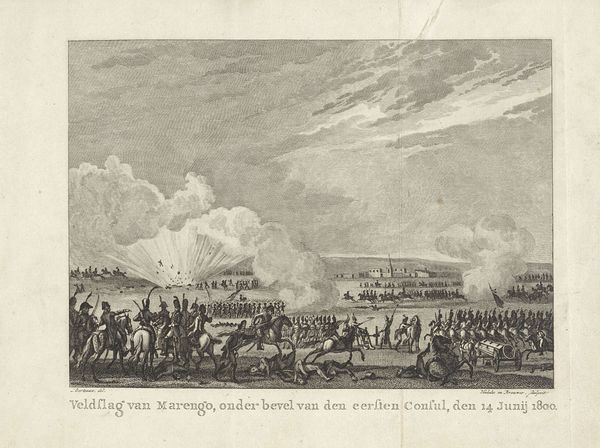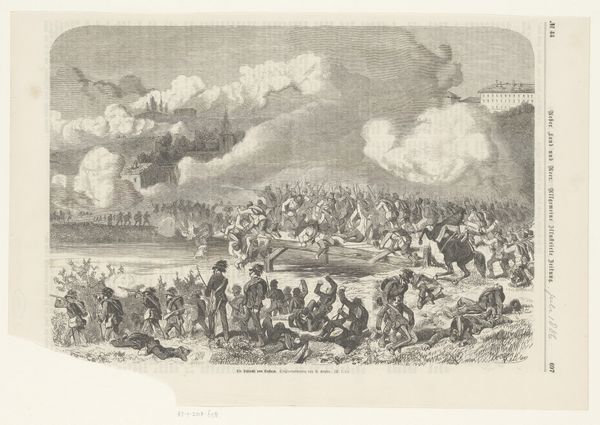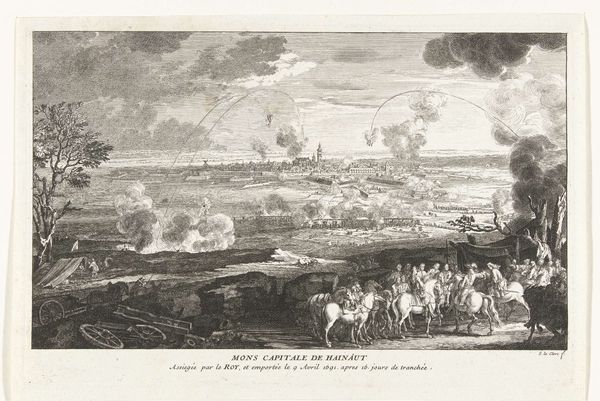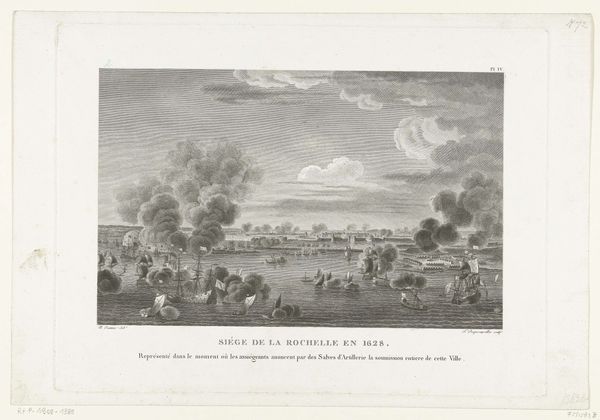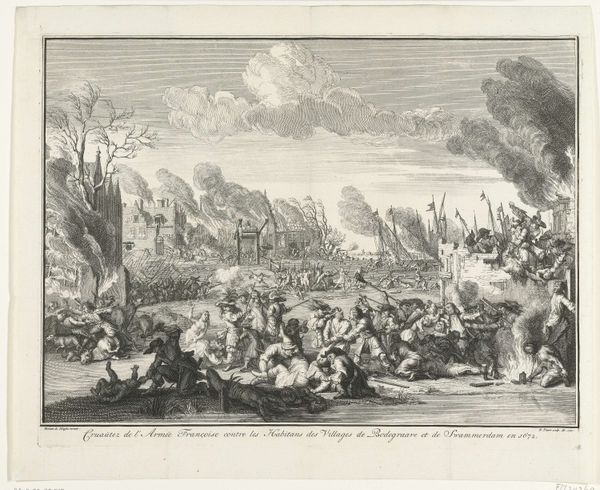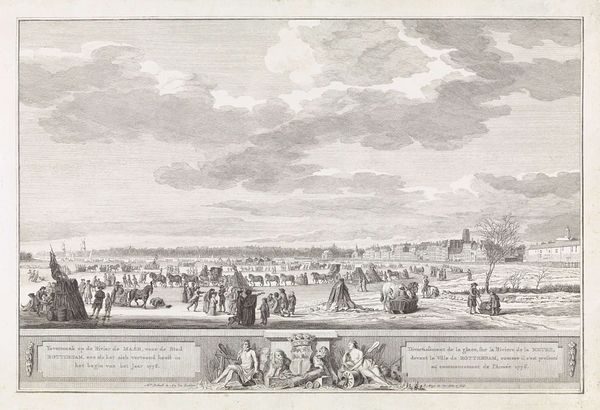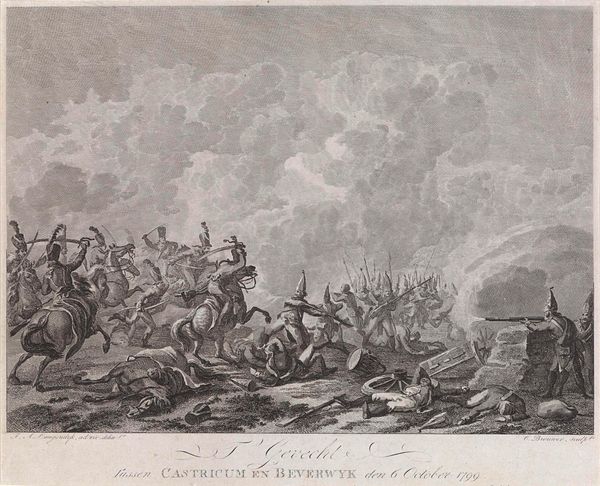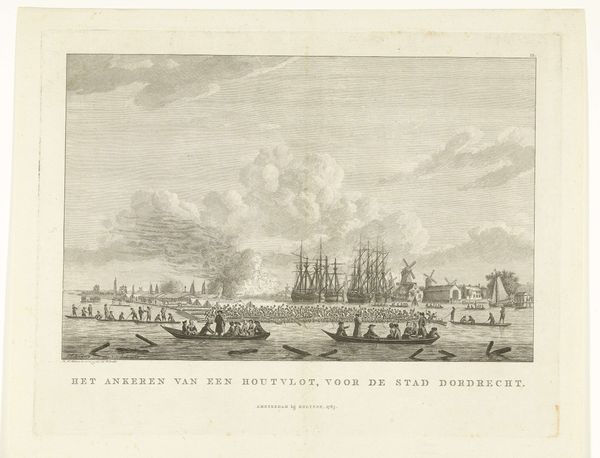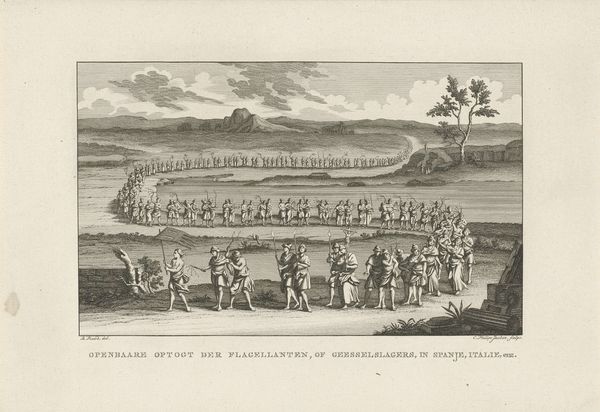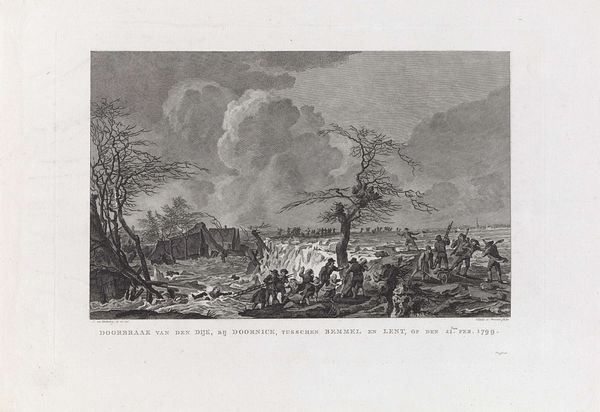
Dimensions: height 297 mm, width 397 mm
Copyright: Rijks Museum: Open Domain
Editor: Here we have François Jacques Dequevauviller’s "Zeeslag bij Malaga, 1704," an engraving from between 1755 and 1811. It depicts a naval battle, rendered with meticulous detail. It’s... surprisingly serene, considering the subject matter. What's your interpretation? Curator: What I see is not serenity, but a visual representation of power dynamics deeply embedded in the historical context. The calm sea belies the violence enacted upon it, and more importantly, *who* is enacting that violence. This print commemorates a battle during the War of the Spanish Succession. Can you see how that larger power struggle plays out visually, beyond just ships firing cannons? Editor: I see ships from different nations arrayed against each other, smoke obscuring details... It's hard to discern specific national identities beyond a general sense of conflict. Is that obscuring intentional, a commentary on the nature of war itself? Curator: Precisely! The very act of commemorating this battle normalizes and glorifies violence. The "objective" rendering masks the human cost, the bodies lost to the sea. Also, think about the intended audience: Who was this image *for*, and what message was it meant to convey about French naval power? And to *whom* are they displaying this naval power? Editor: So, it’s not just a historical record, but a piece of propaganda intended to project power and solidify national identity… even at the expense of historical truth, perhaps? It reminds me of similar visual strategies used to justify colonial endeavors. Curator: Exactly. Analyzing this image through a postcolonial lens helps us deconstruct the narratives of dominance embedded within it. It prompts us to consider the perspectives marginalized by these representations of grand historical events. Editor: This has really changed how I see it! It’s a reminder that even seemingly objective depictions of history are always shaped by the power structures of their time. Curator: And a reminder that interrogating those structures is our responsibility. It encourages us to connect what happened in the past with issues of power and social justice today.
Comments
No comments
Be the first to comment and join the conversation on the ultimate creative platform.
